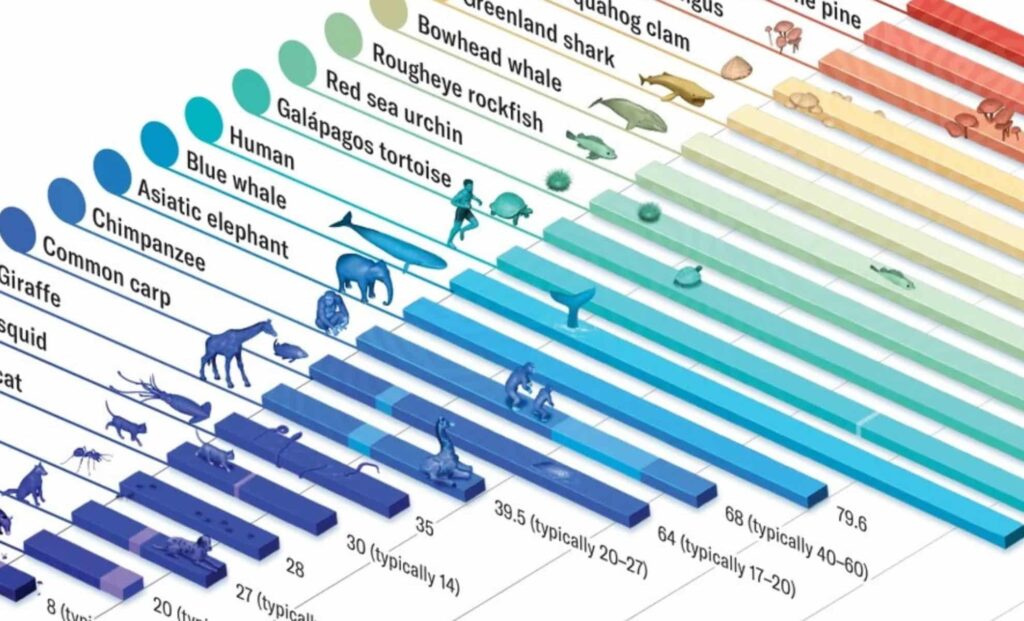Some creatures come and go within the span of a single week. Others glide through time with barely a sign of aging. Scientists are working to understand why certain species live dramatically longer than others, and what biological forces shape the boundaries of life across the animal kingdom.
At the University of Birmingham in England, João Pedro de Magalhães, a molecular biologist, leads the Human Ageing Genomic Resources program, which oversees the AnAge database, a growing catalog of maximum lifespans for hundreds of animal species.
Accoding to Scientific American, His research focuses on species that, in his words, “appear not to age.” That includes some turtles, fishes and salamanders that show no noticeable decline as they grow older. Without interference from predators, accidents or infection, these animals could theoretically survive for decades—or longer.
Evolution at different speeds
The question of why aging varies so widely remains unresolved. “It’s a biological mystery why some species age faster than others,” Magalhães said in an interview. One clue lies in the pace of an animal’s life and its vulnerability to predators. Species that experience high rates of predation often evolve to grow rapidly and reproduce early, sometimes at the cost of longevity. Mice, for instance, mature quickly and tend to die young, long before they have to face threats like cancer in the wild.

Longer-lived animals, by contrast, tend to face fewer natural threats and live in more stable environments. The Greenland shark, which inhabits the cold waters of the North Atlantic, is believed to take around 150 years to reach sexual maturity. With few predators and minimal environmental disturbance, it is in no rush to reproduce. This kind of evolutionary pathway allows such animals to invest in slow aging processes and long-term survival.
The DNA connection
Another key factor appears to be the body’s ability to repair its own DNA. Species that live longer seem to have more effective mechanisms for maintaining genetic stability and preventing mutations that can lead to diseases like cancer. Mice, which rarely live long enough in the wild to benefit from these safeguards, show high cancer rates when raised in captivity. Their biology simply hasn’t evolved to prioritize long-term DNA maintenance.
Magalhães and other researchers are particularly interested in these molecular systems of repair and resistance, which may hold broader implications for understanding how aging works—not only in animals, but possibly in humans. While much remains uncertain, studies like those based on the AnAge database continue to map the outer edges of biological time, species by species.

